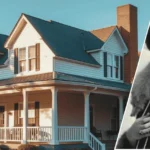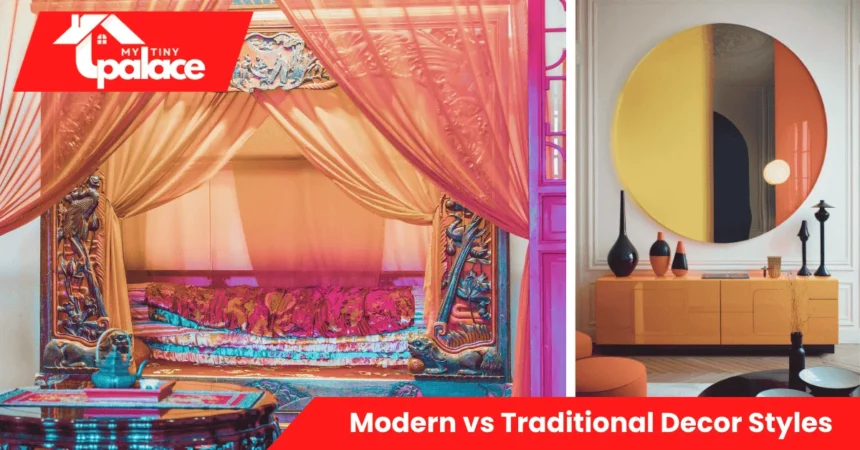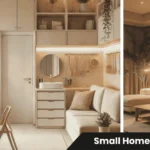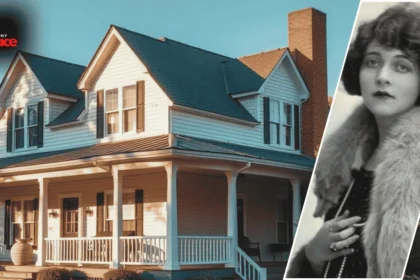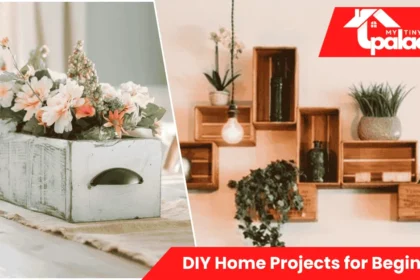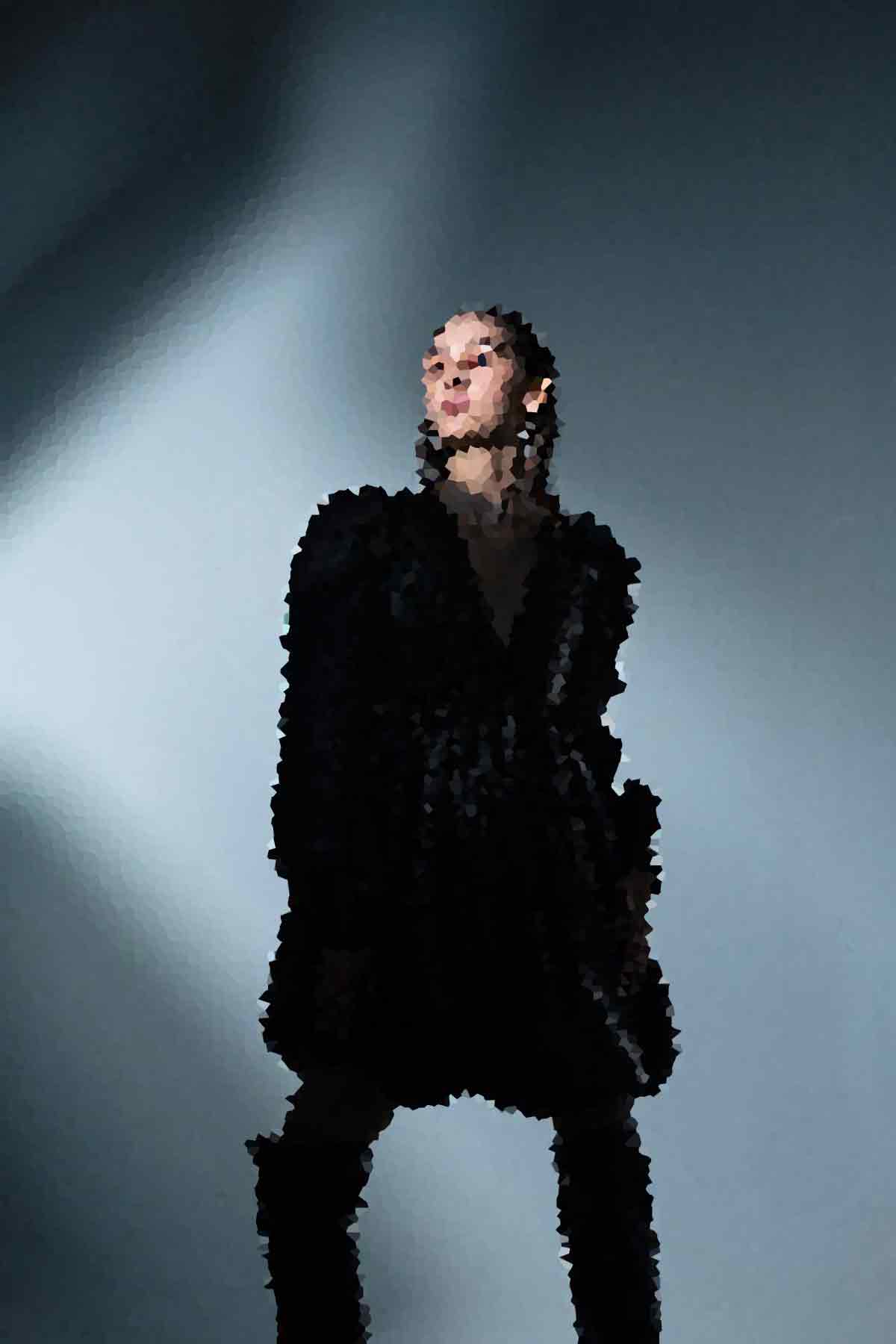Quick summary
Modern decor favors clean lines and minimal ornament. Traditional style embraces rich detail and warm wood tones. Modern fits fast-paced lives and small spaces. Traditional suits formal homes and collectors. Choose based on your daily routine, budget, and room size. Mixing both works when you anchor with one dominant style.
- Quick summary
- What are Modern vs Traditional Decor Styles?
- Key differences at a glance
- Materials, colors & furniture: practical comparison
- How to choose the right style for your home
- Mixing styles: a practical guide
- Costs, time, tools — compact decision table inside
- Pros & cons / who should consider each style
- Quick summary + CTA (what to do next)
What are Modern vs Traditional Decor Styles?
Modern decor emerged in the early 20th century as a response to ornate Victorian interiors. The style strips away excess decoration and celebrates function. You’ll see straight edges, open floor plans, and neutral color schemes. Materials like steel, glass, and concrete dominate. The emotional effect is calm and uncluttered. Rooms feel larger because furniture sits low and walls stay bare.
Traditional decor draws from European design periods spanning the 17th to 19th centuries. This style values craftsmanship and layered detail. Expect carved wood, tufted upholstery, and symmetrical arrangements. Colors lean warm—burgundy, forest green, and cream appear frequently. The look creates a sense of permanence and comfort. Rooms feel grounded and lived-in, like a well-loved library or a country estate dining room.
Both styles answer different questions about how you want to live. Modern asks what you can remove. Traditional asks what you can preserve.
Key differences at a glance
Silhouettes tell the clearest story. Modern furniture features geometric shapes with exposed legs and low backs. Traditional pieces curve at the arms and hide their structure under skirts and trim. Color choices split sharply, too. Modern rooms use black, white, gray, and occasional bold accents. Traditional spaces layer multiple warm tones across walls, fabrics, and rugs.
Material palettes rarely overlap. Modern designers prefer chrome, lacquered wood, and polished concrete. Traditional craftspeople choose oak, mahogany, and plaster moldings. Scale differs as well. Modern sofas sit 18 to 20 inches off the floor. Traditional seating reaches 22 to 24 inches and feels more substantial.
Ornamentation divides the two most visibly. Modern rooms avoid decorative molding and keep hardware minimal. Traditional interiors showcase crown molding, wainscoting, and ornate door hardware. Lighting follows the same pattern. Modern fixtures use simple shades or exposed bulbs. Traditional chandeliers feature crystals, candelabra bases, and multiple tiers. Patterns in modern spaces stay graphic and bold. Traditional fabrics show florals, damask, and paisley.
Materials, colors & furniture: practical comparison
Modern furniture relies on materials that clean quickly and wear slowly. A steel-frame sofa with leather cushions wipes down in seconds. Glass coffee tables show fingerprints but resist water rings. Low-profile sectionals work in small apartments because they don’t block sightlines. Look for pieces with exposed metal legs and cushions that sit directly on the frame. A typical modern living room includes a streamlined sofa around 78 inches long, a glass-top coffee table with a thin profile, and a geometric area rug in charcoal or beige.
Traditional furniture demands more upkeep but lasts generations when maintained. A tufted velvet sofa needs regular vacuuming to prevent dust buildup in the buttons. Wood furniture with carved details requires occasional wax to preserve the finish. Turned legs and rolled arms add visual weight, so traditional pieces suit larger rooms. A classic traditional setup features a camelback sofa measuring 84 inches with rolled arms, a wooden coffee table with carved apron details, and an Oriental rug with intricate borders.
Color choices reflect maintenance needs, too. Modern neutrals hide dust and stains less effectively than you’d think—white sofas show every spill. Traditional darker woods and patterned fabrics camouflage wear better. Matte finishes in modern spaces need frequent wiping to remove hand oils. Glossy traditional wood develops a patina that many homeowners prefer over time.
For concrete recommendations, a modern room works with a Risom-style lounge chair in walnut and leather, paired with a marble-top side table. A traditional room suits a wingback chair in paisley fabric with a cherry wood side table featuring cabriole legs.
How to choose the right style for your home
Start with the room function. Kitchens with open shelving and stainless steel appliances lean modern. Dining rooms with built-in china cabinets favor traditional design. Lighting conditions matter more than most people realize. Modern interiors depend on large windows and recessed lighting to avoid feeling cold. Traditional rooms handle lower light well because layered fabrics and wood tones create warmth even in dim conditions.
Scale drives your decision next. Measure your room before shopping. Modern furniture works in spaces as small as 150 square feet because pieces sit low and tight to walls. Traditional furniture needs at least 200 square feet to breathe. A wingback chair placed too close to a wall loses its profile. Budget plays a role, too. Modern pieces from mass-market retailers cost less upfront—a modern sofa starts around the lower end of the market. Comparable traditional sofas with tufting and carved wood cost significantly more due to labor-intensive construction.
Evaluate what you already own. A single ornate inherited piece pushes you toward traditional or transitional. A collection of minimalist Scandinavian furniture demands that you stay modern. Personal taste breaks ties when practical factors balance out. Ask yourself whether you prefer formality or casual comfort. Traditional style requires occasional polishing and fabric care. Modern finishes tolerate less maintenance but show scratches on glass and metal more readily.
Test before committing. Buy one anchor piece—a sofa or dining table—and live with it for two weeks. Notice how it affects traffic flow and daily tasks. Layer in smaller items only after the anchor piece proves functional. This approach prevents costly mistakes and helps you refine your preference between streamlined simplicity and detailed ornamentation.
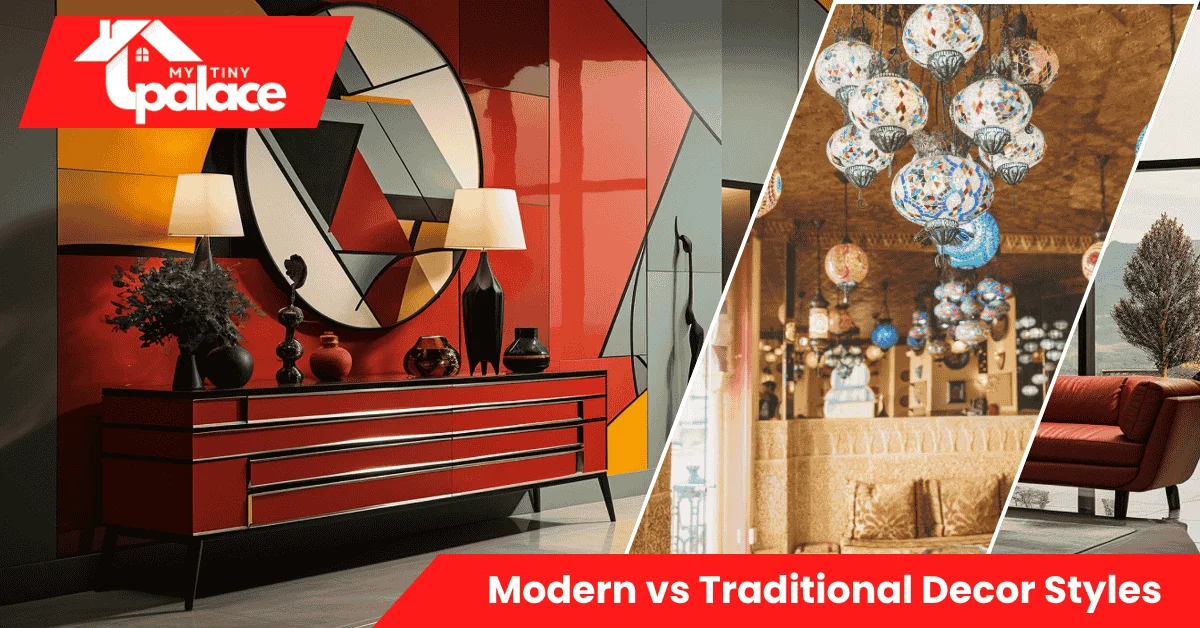
Mixing styles: a practical guide
Blending modern and traditional works when you follow a clear hierarchy. Pick one style as your base—this determines 60 to 70 percent of the room’s furniture and finishes. Layer in the secondary style through smaller accent pieces. A modern base room might include a leather sectional, a glass coffee table, and white walls. Add traditional elements through a Persian rug, brass table lamps, and a single ornate mirror. The reverse works too. Start with traditional upholstered chairs and wood side tables, then introduce modern art, a geometric pendant light, and a streamlined bookshelf.
Balance prevents the mix from looking accidental. Match scales across styles—pair a low modern sofa with a low traditional ottoman, not a high-backed Victorian chair. Repeat one material or finish throughout the space. Brass hardware on modern cabinets can echo brass frames on traditional mirrors. This shared element ties disparate pieces together visually.
Color unifies better than any other tool. Choose a neutral wall color that both styles share—greige, soft white, or charcoal. Pull accent colors from one key piece and repeat them in accessories. If your traditional rug includes navy and rust, add navy pillows to your modern sofa.
Three simple rules for mixing styles
Rule one: limit your mix to two styles maximum. Adding a third creates visual confusion. Stick with modern plus traditional, or modern plus midcentury, but avoid modern plus traditional plus farmhouse.
Rule two: create visual weight balance. Traditional pieces carry more ornamental weight, so pair one ornate item with two or three simple modern pieces. A carved wood buffet balances against a modern dining table and acrylic chairs.
Rule three: use transitional pieces as bridges. Transitional furniture borrows from both styles—a sofa with clean lines but tufted cushions, or a wood table with minimal carving. One or two transitional pieces smooth the transition between pure modern and pure traditional items.
Mini example — living room mix (one-paragraph)
Picture a 250-square-foot living room with a modern gray sectional as the anchor. Add a traditional Turkish rug in rust and navy tones underneath. Introduce a brass arc floor lamp—the metal finish reads modern, but the warm brass tone leans traditional. Hang a large abstract painting in the rug’s colors above the sofa. Place a wood coffee table with simple lines and a dark finish in the center. The metal lamp base, wood table, and brass picture frame create material repetition. The room feels cohesive because the modern base holds 65 percent of the visual weight while traditional accents add warmth without overpowering the clean lines.
Costs, time, tools — compact decision table inside
Budget varies widely based on whether you buy new or source vintage pieces. A modern room refresh at the budget tier runs between $1,200 and $2,500 for a sofa, coffee table, rug, and two lamps from mass-market retailers. Mid-tier modern jumps to $3,500 to $6,000 with better materials and designer reproductions. Premium modern reaches $8,000 to $15,000 or more for authentic midcentury pieces or custom metalwork. Traditional style starts higher. Budget traditional still costs $2,000 to $3,500 because carved wood and tufting add labor costs. Mid-tier traditional hits $5,000 to $9,000. Premium traditional antiques or custom upholstery exceed $12,000 to $25,000.
Time to complete depends on furniture availability. Modern pieces ship faster—expect two to four weeks for delivery. Traditional custom upholstery takes eight to twelve weeks. The tool needs to stay minimal for both. You’ll need furniture delivery, possibly a handyman for wall mounting at $50 to $150 per hour, and a painter if changing wall color at $200 to $500 per room. Modern rooms need fewer tools because décor stays sparse. Traditional rooms might require a carpenter for crown molding at $500 to $1,500 or an electrician for chandelier installation at $150 to $400.
Pros and cons for cost: Modern costs less upfront and is easy, but shows wear on smooth surfaces. Traditional costs more initially but hides wear better and retains value if you buy quality antiques.
| Tier | Modern Cost Range | Traditional Cost Range | Time to Complete | What’s Included |
|---|---|---|---|---|
| Budget | $1,200 – $2,500 | $2,000 – $3,500 | 2–4 weeks | Sofa, coffee table, rug, 2 lamps, basic décor |
| Mid | $3,500 – $6,000 | $5,000 – $9,000 | 4–8 weeks | Quality furniture, designer pieces, professional delivery |
| Premium | $8,000 – $15,000+ | $12,000 – $25,000+ | 8–16 weeks | Custom pieces, antiques, professional installation |
Pros & cons / who should consider each style
Modern style suits renters, small-space dwellers, and anyone wanting low-maintenance surfaces. The streamlined look adapts quickly to moves because pieces don’t require built-in storage or fixed arrangements. Modern resale value stays neutral—buyers appreciate the blank-canvas effect. Drawbacks include a cold feel without careful styling and visible wear on metal and glass.
Traditional style fits homeowners planning to stay long-term, families wanting durable upholstered furniture, and those who inherit heirloom pieces. The layered look feels immediately comfortable and hides daily wear better than modern surfaces. Resale value depends on the local market—traditional appeals to buyers in established neighborhoods, but limits appeal in urban loft markets. Downsides include higher initial costs, more maintenance for wood and fabric, and a poor fit for small spaces.
Mix both styles if you work from home and need flexibility, own pieces from multiple periods, or rent but want personality beyond stark minimalism. Transitional style offers the best of both—clean lines with enough warmth to feel lived-in. Choose pure modern for studio apartments under 400 square feet. Choose pure traditional for homes over 1,500 square feet with period architecture. Choose mixing for everything in between.
Quick summary + CTA (what to do next)
Modern strips down to essentials while traditional layers in detail and warmth. Your choice depends on room size, maintenance tolerance, and how long you plan to stay. Mixing works when you anchor with one dominant style and limit accents to a few key pieces. Start with a mood board to test color palettes and furniture combinations before spending. Try one anchor piece in your preferred style and live with it for two weeks before adding more. Shop your own home first—you might already own the perfect transitional piece to bridge both looks. Measure your space and budget carefully, and don’t hesitate to consult a designer for structural changes or custom work.

